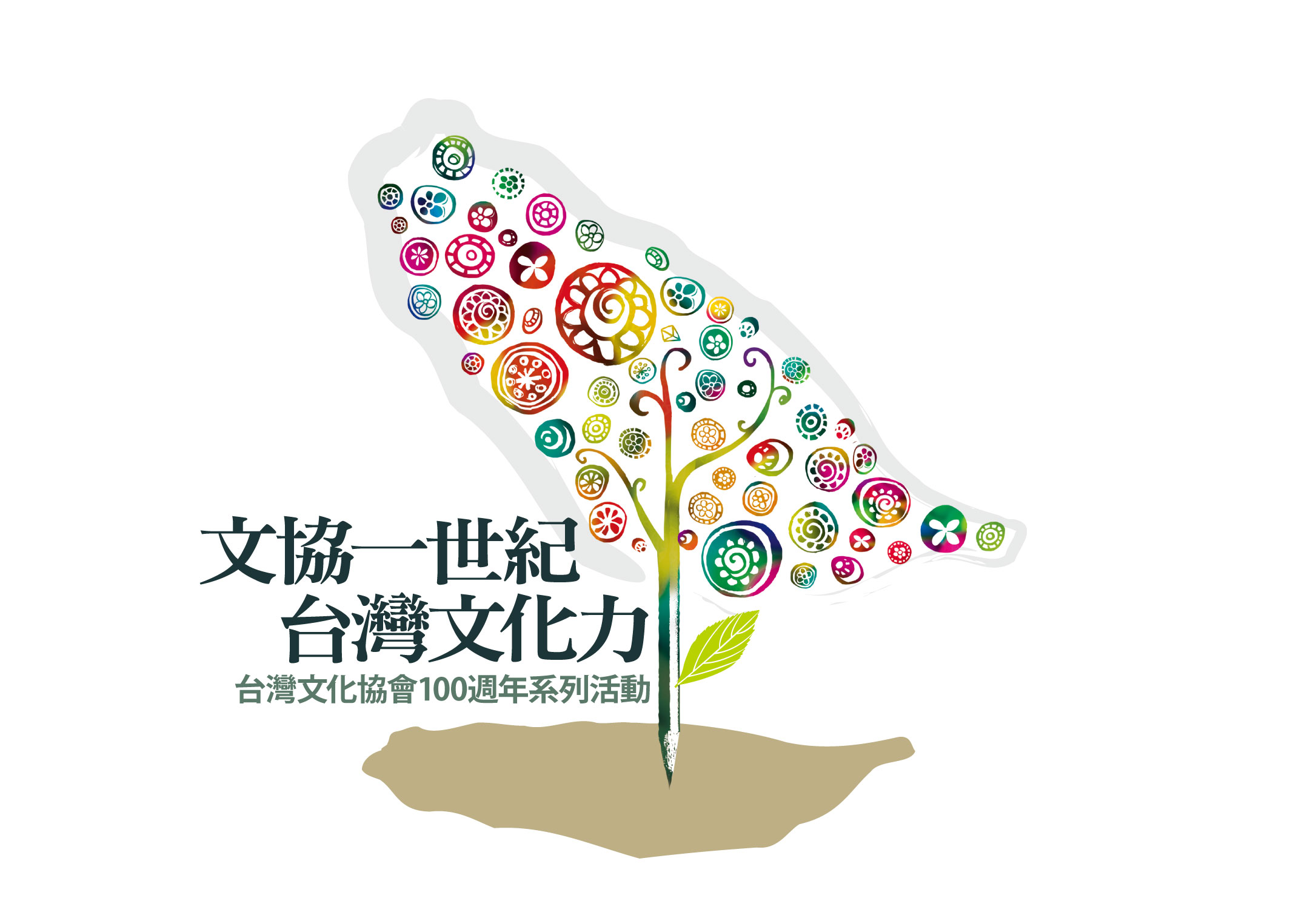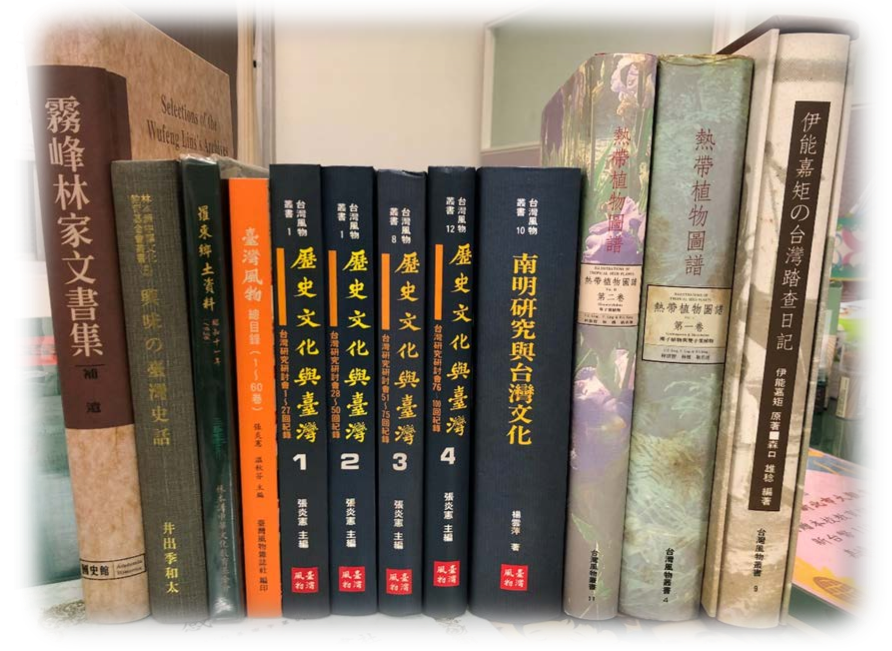 綠島思想起
綠島思想起
Green Island
詹素娟/Wen Chen-hua
(中央研究院臺灣史研究所籌備處,助理研究員)
(Assistant Research Fellow, Preparatory Office, Institute of Taiwan History, Academia Sinica)
2001-07-16

早自三千年前之新石器時代末期,就已經有人類在綠島定居。史前時代的綠島是菲律賓等南島人民北上遷移或文化傳播之跳板,然其孤懸於海上的地理位置,卻使它一度成為隔離與監禁重刑犯的天然監獄,島上的自然資源與島民的生活習俗也因此得以保存。1986年綠島被劃定為風景特定區;1988年再度評定為國家級風景特定區,觀光業使綠島呈現出另一種蓬勃的朝氣。本週「來灣歷史之窗」特別邀請中研院台灣史研究所助理研究員詹素娟執筆,談綠島的天然資源、綠島的鄉民與綠島的過去與現在。
Humans lived on Green Island as early as 3000 years ago, at the end of the Neolithic Era. Prehistoric Green Island was a gangway for north-bound Austronesian migrants from the Philippines and elsewhere, and a springboard for the transmission of culture, but its isolation deriving from its offshore position also made it, at one time, a distant natural prison where serious offenders were detained. Consequently, the natural resources on the island and the islanders’ daily customs were resistant to change. In 1986, Green Island was designated a special scenic area; in 1988, it was further judged to be a national area of outstanding natural beauty, and tourism reinvigorated the island. This week’s Window on Taiwan is written by Chan Su-chuan, an assistant research fellow from the Preparatory Office of the Institute of Taiwan History at Academia Sinica. She has written about Green Island’s natural resources, its inhabitants, and the island’s past and present.
想起綠島,一般人的感覺不免呈現美與惡的交織。浪漫的小夜曲旋律,使綠島恍若銀色月光下搖盪的輕舟,引發椰林、海潮與兩情相悅的想像。然而,長期以來綠島對政治思想犯與黑道大哥的監禁管束,卻也同時塑造了與世隔絕、海上監獄的印象。相對於繁華、熱鬧的本島西部城市,遠在東臺灣外洋上的綠島,顯得特別遙遠與疏離。種種因緣,讓我們忽略了綠島上有世代居住的鄉民、有農漁牧業、有宗教信仰……,有自己的歷史。
When most of us think of Green Island, it’s hard to separate the beauty and the ugliness that have been associated with it. The romantic melodies make Green Island seem like a little boat swaying beneath a silvery moon, conjures up palm trees and ocean tides as perfectly matched as a pair of young lovers… However, for a long time, Green Island was a prison for political prisoners and gangsters, and it also represents isolation from the world, and a prison in the sea. In contrast to the prosperous and bustling towns of Taiwan’s west coast, Green Island, in the ocean off Taiwan’s outer, eastern coast, is remote and faraway. A variety of reasons have led us to overlook the fact that Green Island has inhabitants whose histories on the island go back many generations, farming and fishing industries, religious beliefs. Green Island does have its own history.
島嶼自然篇
綠島位於臺灣本島東南方的太平洋上,33公裡的距離使臺東人可以倚靠在自家窗櫺上,欣賞島嶼的風姿。不等邊的外形,讓我們只能大略描述她的尺碼:長約5公里,寬度則在4-5公里之間,環島周長有20公里,面積約15平方公里。雖然相當迷你,卻已經是臺灣各離島中的第四大島,面積僅次於澎湖本島、蘭嶼、漁翁島。
Natural characteristics of the island
Green Island lies in the Pacific Ocean, 33 km to the southeast of the island of Taiwan, and this short distance allow the residents of Taitung to enjoy the pleasant sight of Green Island from their windows. Its crooked outline means that we can only describe its size very roughly: about 5 km long and 4 or 5 km wide, it has a shoreline of around 20 km, and an area of 15 square km. Although small, it’s Taiwan’s fourth largest offshore island after the main island of Penghu, Orchid Island and Penghu’s Fisherman’s Island.
這個島在地質上是一個火山島,海岸環繞著珊瑚礁,地形相當崎嶇。海拔281公尺的火燒山是小島第一高峰;次高的阿眉山在島中央,海拔275公尺;兩者都是火山口遺跡。島上沒有大河川,短促溪澗由中央山地呈放射狀流入大海。可供耕作或建立聚落的海岸平原、紅土海階約佔全島三分之一;稍為平坦的土地多分佈在島嶼西北部,是主要聚落公館、中寮、南寮、柴口等的所在。
The geology of this island is volcanic, the coast line which encircles it is a coral reef, and its topography is rugged. Huo Shao Hill at an elevation of 281 meters is its highest point. Its next highest, A Mei Hill, is at the center of the island, 275 meters above sea level, both are extinct craters. There are no major rivers or streams on the island, just a short mountain brook which flows from the hilly middle of the island out into the sea. The coastal plains where cultivation or construction is possible, and the laterite marine terraces take up around one third of the island; most of the flat land is distributed to the northwest of the island, where the major settlements of Kungkuan, Chungliao, Nanliao and Chaikou are to be found.
溫暖、潮濕、多風是綠島海洋性氣候的主要特徵。由於雨水極易流失,冬、春兩季稍有旱象;冬季強勁的東北季風常使海潮噴岸,形成所謂的「鹹雨」,傷害農作、樹木,是綠島生活較為辛苦的時段。
Warm, humid and windy, Green Island is characterized by its marine climate. Because rainwater runs off very easily, there are some signs of drought during winter and spring. During the winter, a strong northeasterly monsoon causes the waves to blow up around the coast, creating what is known as the “salty rain” which is damaging to crops and trees, and makes life tough during Green Island’s winters.
從菲律賓急流向北的黑潮,流經綠島、蘭嶼海底火山帶的海脊時,形成漩渦水域,餌料生物大量繁殖,成為漁群滯留與洄游的優良漁場。因此,早自日治時代起,漁業就成為綠島居民的經濟命脈。
When the Kuroshio comes flowing northwards from the Philippines, and passes by the ocean ridge of the volcanic seabeds of Green Island and Orchid Island, it causes the formation of whirlpools, food organisms multiply in great numbers, creating good fishing grounds where fish are held up and migratory fish are found. Consequently, the fishing industry has been an economic lifeline to the people of Green Island since the time of the Japanese occupation.
島嶼之名
在原住民的神話傳說中,綠島叫做Sanasai,是阿美、噶瑪蘭、凱達格蘭等族傳說中,攸關族群遷徙行動過程的踏腳石、中途站;透過Sanasai,臺灣的東部海岸得以連接東南亞島弧,使某些族群的祖源關係可以擴大到東南亞海域的廣大空間,進而提供族群歷史解釋的無限可能性。
The naming of Green Island
In Aboriginal myth, Green Island has the name of Sanasai, and the Ami, Kavalan and Ketagalan tribes say that it was a stepping-stone, a half-way point, in the process of migration. Through Sanasai, Taiwan’s east coast was linked to the island arcs of Southeast Asia, and allowed the ancestors of certain tribes to expand their space in southeast Asian maritime space, and provided limitless possibilities for the explanation of tribal history.

Green Island residents lived self-sufficiently in the 1950s, cut off from the world.
至於在漢人的文獻記錄中,清代綠島曾經稱作尚仔嶼、雞心嶼、南謐東嶼,及最普遍周知的火燒嶼。從清代跨日治五十年,民間莫不稱之「火燒島」。所謂綠島,則是臺灣省政府為綠化童山濯濯的島嶼地景,提倡造林、保林,才在1949年更換此名。
As for Han Chinese documentation, during the Qing dynasty, Green Island was known as Shang Tsai Island, Chicken Heart Island, Nan Mi Tung Island, and, most commonly, Huo Shao [literally: baked wheaten cake] Island. Fifty years later, during the Japanese occupation, it was universally known as “Huo Shao Island.” The name of “Green Island” comes from the Taiwan Provincial Government’s plans to plant the bare, treeless island with forest covering, and the name was changed officially in 1949.
今天的綠島,是臺東縣下的離島鄉,分劃成中寮、南寮、公館三村;每村各有數量不等的聚落,如中寮村有中寮,南寮村有南寮、漁港,公館村有公館、柴口、流麻溝、大湖、左坪五處。原有的柚子湖、楠子湖、海參坪、大白沙等聚落,則已經人去屋廢。全島目前約有612戶、2,513人(依1996年《臺東縣統計要覽》)。
Today Green Island is an off-shore township under the jurisdiction of Taitung County, divided into the three villages of Chungliao, Nanliao and Kungkuan; each village has a different number of settlements. Chungliao, for example, has only Chungliao. Nanliao includes Nanliao and Yukang. Kungkuan has the five settlements of Kungkuan, Chaikou, Liumakou, Tahu and Youping. The former settlements of Youtzu Hu, Nantzu Hu, Haitsanping and Tapaisha have been abandoned and the houses there lie empty. There are around 612 households on the island, and 2,513 inhabitants (according to the Taitung County Statistical Outline for 1996).
島嶼社會
考古家曾經在綠島發現十二處遺址,發掘豐富的物質文化遺存,並進而推估大概在距今3000年前,已經有人類在島上活動。最晚的文化現象,則預測可以近到距今1000年左右。這個時間的下限,是否可以銜接臺灣東部的原住民歷史,還有待追查探索;但,Sanasai時期的綠島,卻是一波波南島民族移民潮的踏足點,他們從這裡一一登上臺灣本島的東海岸。蘭嶼的達悟人,則曾經有部份居民遷住綠島;直到十九世紀初漢人移入,才轉型為漢人社會。
Island Society
Archaeologists have discovered 12 sites on Green Island, and unearthed relics of a rich material culture. They have also been able to infer that there were people already living on Green Island about 3000 years ago. The most recent cultural signs of life are from an estimated 1000 years ago. Whether or not the end of this period can be linked with the history of the Aboriginals of eastern Taiwan awaits further investigation, but the Green Island of the Sanasai period was a stepping stone for Austronesian peoples during a busy period of migration, and successions of them passed through here to reach the east coast of Taiwan itself. Some of the Tao people of Orchid Island emigrated to Green Island at one point, and lived there until Han Chinese moved there at the beginning of the nineteenth century, when the island become a Han Chinese society.
清嘉慶初年,來自今屏東小琉球及東港的漢人漁民,舉家遷居綠島;由於平原狹小、耕地有限,咸豐年間人口已達飽和。從此以後,在交通困難及缺乏天然良港的限制下,島民過著與世隔離的生活,以農耕為業、捕魚為輔,自給自足。
Around the turn of the nineteenth century, Han Chinese fishermen from Hsiao Liuchiu Island off Pingtung County moved to Green Island with their families; because the plains were narrow and cramped, and arable land was limited, and by the mid-nineteenth century, population of the island was at saturation point. From here on, limited by transportation difficulties and the lack of a good natural harbor, the island’s residents were cut off from the world, and made a subsistence living from farming, supplemented by fishing.

Fishing is the principle occupation of the people of Green Island.
日治中期,日本人在島上設置柴魚加工場,造成島嶼產業的變遷。來自沖繩的漁民寄留綠島,傳入鰹釣魚法,改進傳統簡單的釣漁技法;島嶼周圍的良好漁場環境,終於得到充份利用,並一躍而為綠島的主要生計,農業退居為輔。不過,產業結構雖然改變,傳統的生活型態則依然孤立;島民大多世代傳承,以自然增加為主。人際交流與各種關係的建立,如結婚、收養、分家等,皆不脫島內各聚落的空間範圍。
During the period of Japanese occupation, the Japanese set up a processing plant for smoked fish, creating a change in the industry of the island. Fishermen from Okinawa moved to Green Island, and passed on their bonito-fishing skills, improving the simple traditional fishing methods of the local fishermen. The good fishing grounds surrounding the island were finally being used to the full, and soon became Green Island’s main source of livelihood, as farming receded to a supplementary role. However, although the industrial structure of the island had improved, the inhabitants’ traditional way of life remained as isolated as ever; with no new blood from outside to increase the population. The structure of human exchange and relationships, such as marriage, child-rearing, division of family property, etc., did not move beyond the spatial scope of the island’s settlements.
一九六○年代,綠島的對外交通漸獲改善,提供人口流動的基礎條件。同時,臺灣的經濟結構發生重大蛻變,傳統產業幾乎無力為繼,綠島也面臨類似困境。隔海的臺東市及成功鎮新港漁港,開始吸引綠島人口外移;島上在缺乏高中及以上學校的限制下,青年人口也大量流失。一些傳統聚落的廢棄,就是在這種情況下造成的。
In the 1960s, transport and communications with the outside world gradually began to improve, providing basic terms for population mobility. At the same time, Taiwan’s economic structure was undergoing a great metamorphosis, as traditional industries struggled to continue, and Green Island too faced a similar predicament. Taitung City across the water, and the Hsinkang fishing harbor at Chengkung Township, started to attract migrants from Green Island, and with no senior high school for the teenagers of Green Island to attend, many of them were lost to the mainland. In this way, some of traditional settlements ended up abandoned.
一九八○年代,意想不到的契機為綠島帶來新生。綠島以獨特的島嶼風光與海岸生態資源,在1986年被劃定為風景特定區;1988年,再度評定為國家級風景特定區,劃歸東海岸風景管理處管理;1991年,正式成立管理站。在觀光業的大力推展下,綠島重新展現蓬勃的活力。大量的觀光客,使外資迅速投入;旅館、餐飲、浮潛、機車、藝品店等,如雨後春筍般增加。觀光業成為綠島的產業火車頭。
In the 1980s, no one could have imagined the turning point which was to bring new life to Green Island. With its isolated outlook and coastal resources, it was designated as a special scenic area in 1986. In 1988, it was further judged to be a national area of outstanding natural beauty, and put under the management of the East Coast Scenic Area Administration, and in 1991, an administration office was formally established. With a tourism industry being heavily promoted, Green Island once again began to show signs of life. Large numbers of tourists meant that outside investment increased rapidly: hotels, restaurants, diving, scooter hire and gift shops began to spring up everywhere. Tourism became Green Island’s main industry.
不再垂淚的人權
綠島曾經是人權禁地,是白色恐怖象徵,是悲情垂淚的哀土。綠島能再明亮,除了觀光產業帶來新生力量,主要還是在大社會的蛻變下,卻除了嚴厲冷肅的無情黑夜。
No more human rights injustices
Green Island used to be out of bounds for human rights, a symbol of the “white terror” period, and a sad place where many tears were shed. Now Green Island can shine once again. Aside from the new life brought by the tourism industry, important changes in Taiwan society have erased the cruel, dark nights of the past.
在一群人權運動者的奔走下,1998年12月10日,當時的行政院蕭萬長與十位綠島小朋友,為籌議甚久的人權紀念碑主持動土典禮。一年之後,在陽光普照中,李登輝總統親臨綠島,主持人權紀念碑的落成典禮。 黑夜退去,綠島社會的本質得以再現,綠島終於擁有屬於自己的歷史。
Thanks to the ceaseless efforts of a group of human rights campaigners, on December 10, 1998, Vincent Siew and ten local children presided at a ground-breaking ceremony for the long-discussed human rights monument. On a sunny day one year later, President Lee Teng-hui came to Green Island to direct the unveiling ceremony for the human rights monument. The dark night had receded, and the original character of Green Island society showed through once again. Green Island finally possessed its own history.
Edited by Tina Lee/ translated by Elizabeth Hoile
李美儀編輯/何麗薩翻譯









